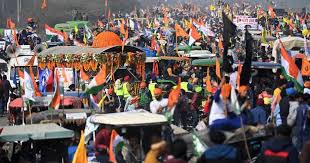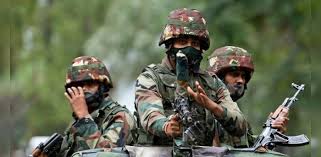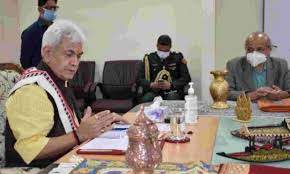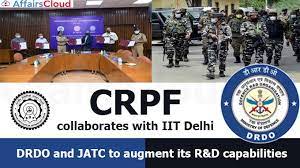Feature
Has violence become its own master in Kashmir ?
 Srinagar : Has violence become its own master in Jammu and Kashmir? It looks like, with both mainstream and separatist leaders admitting they are not in control of the situation in the valley.
Srinagar : Has violence become its own master in Jammu and Kashmir? It looks like, with both mainstream and separatist leaders admitting they are not in control of the situation in the valley.
The cost paid in terms of human lives and economy since the July 8 killing of militant commander Burhan Wani and the later street protests will haunt the Kashmir Valley for long.
Kashmir’s tourism season had started wonderfully this summer after the unprecedented floods of 2014. Hotels and houseboats in the valley ran full and were over-booked till September-end.
That rosy picture has faded into oblivion as if it never existed.
Every tourist except those going to Ladakh has left the Kashmir Valley.
“All bookings have been cancelled and it is shutters this year for the tourist industry,” said a top hotelier who did not wish to be named.
Most hotels in Gulmarg, Pahalgam and Sonamarg, the three major tourist destinations in Kashmir, have decided to shut their establishments for now.
Trade and industry have bled white during the last 15 days of curfew and separatist-called shutdowns.
A modest estimate puts the losses suffered by them during this period at a whopping Rs 1,000 crore.
Supplies are running thin as the strategic Srinagar-Jammu highway, the lifeline to the landlocked valley, remains shut because of protests during the day.
Trucks carrying petroleum products and other essentials to the valley are entering at night, said a senior official.
The highway has been worst hit because most protests in south Kashmir have taken place in towns and villages situated either on the highway or close to it.
Education has taken an even more severe beating. Universities, colleges and schools have been shut in the valley for nearly a month.
The government decision to open schools in four districts is yet to evoke a positive response from the students or teachers.
The number of pilgrims arriving for the ongoing Amarnath Yatra has been steadily declining.
Due to this, the Shri Amarnathji Shrine Board has closed two out of the four registration counters for the pilgrims in the Jammu region.
Yet, the greatest loss suffered by Kashmir has been in terms of human lives and incapacitating injuries during clashes between the mobs and the security forces.
Over 45 people, mostly youths belonging to south Kashmir districts of Anantnag, Shopian, Kulgam and Pulwama, have died in clashes after Hizbul Mujahideen commander Burhan Wani was killed on July 8.
Doctors fear that among the injured, nearly 40 who sustained pellet gunshots fired by security forces might never regain their vision.
This bone-chilling revelation is enough to prove that Kashmir has both figuratively and literally been through its darkest fortnight.
The separatists have been calling shutdowns during this period and the authorities have been responding with curfews and restrictions.
This has been the story of Kashmir since insurgency started in the late 1980s.
The sordid drama of death and destruction can continue endlessly if Kashmir’s leaders, irrespective of their political loyalties, have indeed lost control on the ground.
The separatist camp is calling protests while admitting it is not in complete control of the situation. Mainstream politicians have been hiding behind security forces and bullet proof vehicles.
If this is the grim reality, then the separatists have no right to call for protests and mainstream leaders have no right to be called people’s representatives.
It is time for Kashmiris to introspect and ask who represents them today.
Entertainment
Meghalaya Reserves Legalized Gambling and Sports Betting for Tourists

The State Scores Extra High on Gaming-Friendly Industry Index
Meghalaya scored 92.85 out of 100 possible points in a Gaming Industry Index and proved to be India’s most gaming-friendly state following its recent profound legislation changes over the field allowing land-based and online gaming, including games of chance, under a licensing regime.
The index by the UK India Business Council (UKIBC) uses a scale of 0 to 100 to measure the level of legalisation on gambling and betting achieved by a state based on the scores over a set of seven different games – lottery, horse racing, betting on sports, poker, rummy, casino and fantasy sports
Starting from February last year, Meghalaya became the third state in India’s northeast to legalise gambling and betting after Sikkim and Nagaland. After consultations with the UKIBC, the state proceeded with the adoption of the Meghalaya Regulation of Gaming Act, 2021 and the nullification of the Meghalaya Prevention of Gambling Act, 1970. Subsequently in December, the Meghalaya Regulation of Gaming Rules, 2021 were notified and came into force.
All for the Tourists
The move to legalise and license various forms of offline and online betting and gambling in Meghalaya is aimed at boosting tourism and creating jobs, and altogether raising taxation revenues for the northeastern state. At the same time, the opportunities to bet and gamble legally will be reserved only for tourists and visitors.
“We came out with a Gaming Act and subsequently framed the Regulation of Gaming Rules, 2021. The government will accordingly issue licenses to operate games of skill and chance, both online and offline,” said James P. K. Sangma, Meghalaya State Law and Taxation Minister speaking in the capital city of Shillong. “But the legalized gambling and gaming will only be for tourists and not residents of Meghalaya,” he continued.
To be allowed to play, tourists and people visiting the state for work or business purposes will have to prove their non-resident status by presenting appropriate documents, in a process similar to a bank KYC (Know Your Customer) procedure.
Meghalaya Reaches Out to a Vast Market
With 140 millions of people in India estimated to bet regularly on sports, and a total of 370 million desi bettors around prominent sporting events, as per data from one of the latest reports by Esse N Videri, Meghalaya is set to reach out and take a piece of a vast market.
Estimates on the financial value of India’s sports betting market, combined across all types of offline channels and online sports and cricket predictions and betting platforms, speak about amounts between $130 and $150 billion (roughly between ₹9.7 and ₹11.5 lakh crore).
Andhra Pradesh, Telangana and Delhi are shown to deliver the highest number of bettors and Meghalaya can count on substantial tourists flow from their betting circles. The sports betting communities of Karnataka, Maharashtra, Uttar Pradesh and Haryana are also not to be underestimated.
Among the sports, cricket is most popular, registering 68 percent of the total bet count analyzed by Esse N Videri. Football takes second position with 11 percent of the bets, followed by betting on FIFA at 7 percent and on eCricket at 5 percent. The last position in the Top 5 of popular sports for betting in India is taken by tennis with 3 percent of the bet count.
Local Citizens will Still have Their Teer Betting
Meghalaya residents will still be permitted to participate in teer betting over arrow-shooting results. Teer is a traditional method of gambling, somewhat similar to a lottery draw, and held under the rules of the Meghalaya Regulation of the Game of Arrow Shooting and the Sale of Teer Tickets Act, 2018.
Teer includes bettors wagering on the number of arrows that reach the target which is placed about 50 meters away from a team of 20 archers positioned in a semicircle.
The archers shoot volleys of arrows at the target for ten minutes, and players place their bets choosing a number between 0 and 99 trying to guess the last two digits of the number of arrows that successfully pierce the target.
If, for example, the number of hits is 256, anyone who has bet on 56 wins an amount eight times bigger than their wager.





















